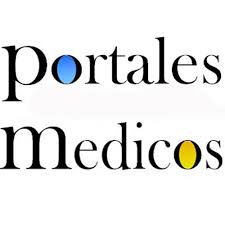Ajuste antibiótico en disfunción renal aguda y crónica, análisis sistemático de un problema clínico complejo
Resumen
DOI: https://doi.org/10.53766/AcBio/2025.15.29.19
La prescripción de antibióticos en pacientes con enfermedad renal crónica plantea un doble problema. El uso adecuado de los agentes antibacterianos es fundamental para garantizar la eficacia y prevenir la aparición de resistencias, y las dosis deben adaptarse a la función renal para prevenir efectos adversos. Un grupo de trabajo de especialistas en enfermedades revisó las indicaciones, los regímenes de dosificación, las modalidades de administración y los ajustes de dosis de los antibióticos comercializados para pacientes con insuficiencia renal. Los datos disponibles y detallados en el presente artículo tienen como objetivo proporcionar una actualización basada en la evidencia de las recomendaciones sobre enfermedades infecciosas para los profesionales de la salud que manejan pacientes con enfermedad renal crónica.
Recibido: 09/06/2024
Aceptado: 13/07/2024
Palabras clave
Texto completo:
PDFReferencias
V. Bongard, J. Dallongeville, D. Arveiler, J.-B. Ruidavets, D. Cottel, A. Wagner, et al. (Assessment and characteristics of chronic renal insufficiency in France) Ann Cardiol Angeiol, 61 (4) (2012), pp. 239-244
G. Breton, M. Froissart, N. Janus, V. Launay-Vacher, C. Berr, C. Tzourio, et al. Inappropriate drug use and mortality in community-dwelling elderly with impaired kidney function – the Three-City population-based study Nephrol Dial Transplant, 26 (9) (2011), pp. 2852-2859
D.W. Johnson, S.J. Fleming. The use of vaccines in renal failure Clin Pharmacokinet, 22 (6) (1992), pp. 434-446.
Agence de la biomédecine Rapport REIN (2015) (Accessed on October 25, 2017) https://www.agence-biomedecine.fr/IMG/pdf/rapport_rein_2015.pdf
S. Deshayes, A. Coquerel, R. Verdon. Neurological adverse effects attributable to ß-lactam antibiotics: a literature review. Drug Saf, 40 (12) (2017), pp. 1171-1198
F.A. Manian, W.J. Stone, R.H. Alford Adverse antibiotic effects associated with renal insufficiency Rev Infect Dis, 12 (2) (1990), pp. 236-249
Kidney Disease: Improving Global Outcomes (KDIGO) CKD Work Group KDIGO 2012 clinical practice guideline for the evaluation and management of chronic kidney disease Kidney Inter Suppl, 3 (2013), pp. 1-150
P. Delanaye, M. Flamant, É. Cavalier, F. Guerber, T. Vallotton, O. Moranne, et al. (Dosing adjustment and renal function: which equation(s)?) Nephrol Ther, 12 (1) (2016), pp. 18-31
D.N. Gilbert Urinary tract infections in patients with chronic renal insufficiency. Clin J Am Soc Nephrol, 1 (2) (2006), pp. 327-331.
Base de donnée publique des médicaments. http://base-donnees-publique.medicaments.gouv.fr/index.php. (Accessed on October 26, 2017).
E. Senneville, J. Caillon, B. Calvet, F. Jehl. Towards a definition of daptomycin optimal dose: lessons learned from experimental and clinical data Int J Antimicrob Agents, 47 (1) (2016), pp. 12-19
G.G. Aubin, C. Deschanvres, D. Boutoille, P. Abgueguen, S. Corvec, J. Caillon, et al. Daptomycin use: where is the truth? Future Microbiol, 12 (2017), pp. 9-12
N. Sandoval, S. Grau, L. Sorlí, M. Montero, E. Esteve, J.P. Horcajada. Clinical experience with the use of daptomycin in a tertiary care teaching hospital in Barcelona, Spain Future Microbiol, 10 (7) (2015), pp. 1145-1154
S. Marchand, M. Lauda, G. Le Moal, P. Gobin, W. Couet, F. Roblot Pharmacokinetics of daptomycin in a patient with severe renal failure not receiving dialysis. Antimicrob Agents Chemother, 57 (6) (2013), pp. 2898-2899
J. Diolez, N. Venisse, S. Belmouaz, M.-A. Bauwens, F. Bridoux, G. Beraud. Pilot pharmacokinetic study of high-dose daptomycin in hemodialysis patients with infected medical devices Am J Kidney Dis, 70 (5) (2017), pp. 732-734
S. Flanagan, S.L. Minassian, D. Morris, R. Ponnuraj, T.C. Marbury, H.W. Alcorn, et al. Pharmacokinetics of tedizolid in subjects with renal or hepatic impairment Antimicrob Agents Chemother, 58 (11) (2014), pp. 6471-6476
G. Houin, F. Brunner, T. Nebout, M. Cherfaoui, G. Lagrue, J.P. Tillement. The effects of chronic renal insufficiency on the pharmacokinetics of doxycycline in man Br J Clin Pharmacol, 16 (3) (1983), pp. 245-252
I.H. Patel, J.G. Sugihara, R.E. Weinfeld, E.G. Wong, A.W. Siemsen, S.J. Berman Ceftriaxone pharmacokinetics in patients with various degrees of renal impairment Antimicrob Agents Chemother, 25 (4) (1984), pp. 438-442
N. Fernández-Hidalgo, B. Almirante, J. Gavaldà, M. Gurgui, C. Peña, A. de Alarcón, et al. Ampicillin plus ceftriaxone is as effective as ampicillin plus gentamicin for treating enterococcus faecalis infective endocarditis Clin Infect Dis, 56 (9) (2013), pp. 1261-1268
Y. Inoue, Y. Doi, T. Arisato, S. Sugioka, K. Koga, K. Nishioka, et al. Three cases of hemodialysis patients receiving high-dose ceftriaxone: serum concentrations and its neurotoxicity. Kidney Int Rep, 2 (5) (2017), pp. 984-987
K.B. Kim, S.M. Kim, W. Park, J.S. Kim, S.K. Kwon, H.-Y. Kim. Ceftriaxone-induced neurotoxicity: case report, pharmacokinetic considerations, and literature review. J Korean Med Sci, 27 (9) (2012), pp. 1120-1123
N. Allou, A. Bouteau, J. Allyn, A. Snauwaert, D. Valance, J. Jabot, et al. Impact of a high loading dose of amikacin in patients with severe sepsis or septic shock. Ann Intensive Care, 6 (1) (2016), p. 106
Agence française de sécurité sanitaire des produits de santé. Update on good use of injectable aminoglycosides, gentamicin, tobramycin, netilmicin, amikacin. Pharmacological properties, indications, dosage, and mode of administration, treatment monitoring
F.S. Taccone, P.-F. Laterre, H. Spapen, T. Dugernier, I. Delattre, B. Layeux, et al. Revisiting the loading dose of amikacin for patients with severe sepsis and septic shock. Crit Care Lond Engl, 14 (2) (2010), p. R53
R. Gauzit, R. Cohen, C. Chidiac, Y. Péan, J.-D. Cavallo, E. Bingen, et al. Rapport ANSM Mars 2011 : “Bon usage des aminosides administrés par voie injectable gentamicine, tobramycine, nétilmicine, amikacine – Mise au point”. (Disponible à l’adresse URL suivante : http://ansm.sante.fr/. Accessed on April 30, 2015).
SPILF/GPIP 2011. Recommandations de bonne pratique antibiothérapie par voie générale en pratique courante dans les infections respiratoires hautes de l’adulte et l’enfant. http://www.infectiologie.com/UserFiles/File/medias/Recos/2011-infections-respir-hautes-recommandations.pdf. (Accessed on March 15, 2017).
SPILF 2015. Diagnostic et antibiothérapie des infections urinaires bactériennes communautaires de l’adulte. http://www.infectiologie.com/UserFiles/File/spilf/recos/infections-urinaires-spilf.pdf. (Accessed on March 15, 2017).
S. Karie, V. Launay-Vacher, G. Deray. GPR antibactériens. 3ème Édition. Guide de prescription des médicaments chez le patient insuffisant rénal. Méditions International, Paris (2008)
A. Leroy, G. Humbert, M. Godin, J.P. Fillastre. Pharmacokinetics of cefadroxil in patients with impaired renal function. J Antimicrob Chemother, 10 (Suppl. B) (1982), pp. 39-46
SFAR. Antibioprophylaxie en chirurgie et médecine interventionnelle (2010) (Accessed on March 21, 2017). http://sfar.org/wp-content/uploads/2015/10/2_AFAR_Antibioprophylaxie-en-chirurgie-et-medecine-interventionnelle.pdf
Propositions d’alternatives à l’oxacilline ou la cloxacilline par voie IV chez l’adulte et l’enfant en contexte de rupture de stock SPILF/GPIP, 2016. http://www.infectiologie.com/UserFiles/File/spilf/recos/2016-alternatives-penicillines-m-injectables.pdf. (Accessed on March 24, 2017).
Spondylodiscites SPILF, 2007. http://www.infectiologie.com/UserFiles/File/spilf/recos/2016-alternatives-penicillines-m-injectables.pdf. (Accessed on March 24, 2017).
HAS 2014 Infection récente de prothèse de hanche ou genou. http://www.infectiologie.com/UserFiles/File/spilf/recos/2016-alternatives-penicillines-m-injectables.pdf. (Accessed on March 24, 2017).
Infections ostéo-articulaires sur matériel SPILF, 2008. http://www.infectiologie.com/UserFiles/File/spilf/recos/2016-alternatives-penicillines-m-injectables.pdf. (Accessed on March 24, 2017).
Y. Yamashita, H. Kamiyama, A. Yamamoto, H. Kanoh, Y. Yuhki, A. Ueda, et al. Relationship between PK/PD of cefepime and clinical outcome in febrile neutropenic patients with normal renal function. Yakugaku Zasshi, 136 (12) (2016), pp. 1641-1649
T.M. Chapuis, E. Giannoni, P.A. Majcherczyk, R. Chioléro, M.-D. Schaller, M.M. Berger, et al. Prospective monitoring of cefepime in intensive care unit adult patients. Crit Care Lond Engl, 14 (2) (2010), p. R51
ANSM. Céfépime : rappel des risques de réactions graves lors du non respect des posologies recommandées notamment en cas de d’insuffisance rénale – Point d’Information (2014). http://ansm.sante.fr/S-informer/Points-d-information-Points-d-information/Cefepime-rappel-des-risques-de-reactions-graves-lors-du-non-respect-des-posologies-recommandees-notamment-en-cas-de-d-insuffisance-renale-Point-d-Information (Accessed on March 21, 2017)
D.R. Guay, R.C. Meatherall, G.K. Harding, G.R. Brown. Pharmacokinetics of cefixime (CL 284,635; FK 027) in healthy subjects and patients with renal insufficiency. Antimicrob Agents Chemother, 30 (3) (1986), pp. 485-490
SPILF 2009. Prise en charge des méningites bactériennes de l’adulte (2009). http://www.infectiologie.com/UserFiles/File/medias/_documents/consensus/2008-Meningites-court.pdf (Accessed on March 14, 2017) Google Scholar
B. Brink, E. Kimland, M. von Euler. (An unusual case of a side effect. Cefotaxime-induced confusion in a patient with renal failure). Lakartidningen, 100 (28–29) (2003), pp. 2370-2371
H. Guet-Revillet, A. Emirian, M. Groh, B. Nebbad-Lechani, E. Weiss, O. Join-Lambert, et al. Pharmacological study of cefoxitin as an alternative antibiotic therapy to carbapenems in treatment of urinary tract infections due to extended-spectrum-ß-lactamase-producing Escherichia coli Antimicrob Agents Chemother, 58 (8) (2014), pp. 4899-4901
G.R. Aronoff, W.M. Bennett, J.S. Berns, et al.. Drug prescribing in renal failure. Dosing guidelines for adults and children (5th ed.), American College of Physicians, Philadelphia (2007)
ANSM. Antibiothérapie par voie générale dans les infections respiratoires basses de l’adulte (2010) . http://ansm.sante.fr/var/ansm_site/storage/original/application/b33b6936699f3fefdd075316c40a0734.pdf
A.R. Tunkel, R. Hasbun, A. Bhimraj, K. Byers, S.L. Kaplan, W. Michael Scheld, et al. 2017 Infectious Diseases Society of America's clinical practice guidelines for healthcare-associated ventriculitis and meningitis. Clin Infect Dis (2017), 10.1093/cid/ciw861
A.C. Kalil, M.L. Metersky, M. Klompas, J. Muscedere, D.A. Sweeney, L.B. Palmer, et al. Management of adults with hospital-acquired and ventilator-associated pneumonia: 2016 Clinical Practice Guidelines by the Infectious Diseases Society of America and the American Thoracic Society. Clin Infect Dis, 63 (5) (2016), pp. e61-e111
H. Merdjan, A. Tarral, S. Das, J. Li. Phase 1 study assessing the pharmacokinetic profile and safety of avibactam in patients with renal impairment. J Clin Pharmacol, 57 (2) (2017), pp. 211-218
A. Torres, J.W. Mouton, F. Pea. Pharmacokinetics and dosing of ceftobiprole medocaril for the treatment of hospital- and community-acquired pneumonia in different patient populations. Clin Pharmacokinet, 55 (12) (2016), pp. 1507-1520
B. Roos, A. Schmitt-Hoffmann, M. Schleimer, et al. Safety and pharmacokinetics of BAL5788 in healthy subjects with normal or impaired renal function (abstract A-23). 43rd Annual Interscience Conference on Antimicrobial Agents and Chemotherapy, American Society for Microbiology; 2003 Sep 14–17; Chicago (IL) (2003)
A.J. Xiao, B.W. Miller, J.A. Huntington, D.P. Nicolau. Ceftolozane/tazobactam pharmacokinetic/pharmacodynamic-derived dose justification for phase 3 studies in patients with nosocomial pneumonia. J Clin Pharmacol, 56 (1) (2016), pp. 56-66
W.D. Oliver, E.L. Heil, J.P. Gonzales, S. Mehrotra, K. Robinett, P. Saleeb, et al. Ceftolozane-tazobactam pharmacokinetics in a critically ill patient on continuous venovenous hemofiltration. Antimicrob Agents Chemother, 60 (3) (2015), pp. 1899-1901
M. Wooley, B. Miller, G. Krishna, E. Hershberger, G. Chandorkar. Impact of renal function on the pharmacokinetics and safety of ceftolozane-tazobactam. Antimicrob Agents Chemother, 58 (4) (2014), pp. 2249-2255
M.C. Porter, B.A. Henderson, P.E. Healy, G.W. Coombs, P.R. Ingram, D. McLellan, et al. Can interchangeability of lincosamides be assumed in clinical practice? Comparative MICs of clindamycin and lincomycin for Streptococcus pyogenes, Streptococcus agalactiae and Staphylococcus aureus. J Antimicrob Chemother, 69 (3) (2014), pp. 856-857
J. Spízek, T. Rezanka. Lincomycin, clindamycin and their applications. Appl Microbiol Biotechnol, 64 (4) (2004), pp. 455-464
C. Liu, et al. Clinical practice guidelines by the Infectious Diseases Society of America for the treatment of methicillin-resistant Staphylococcus aureus infections in adults and children (2011). https://www.idsociety.org/uploadedFiles/IDSA/Guidelines-Patient_Care/PDF_Library/MRSA.pdf
K. Gupta, T.M. Hooton, K.G. Naber, B. Wullt, R. Colgan, L.G. Miller, et al. International clinical practice guidelines for the treatment of acute uncomplicated cystitis and pyelonephritis in women: a 2010 update by the Infectious Diseases Society of America and the European Society for Microbiology and Infectious Diseases. Clin Infect Dis, 52 (5) (2011), pp. e103-e120.
A. Shah, J. Lettieri, R. Blum, S. Millikin, D. Sica, A.H. Heller. Pharmacokinetics of intravenous ciprofloxacin in normal and renally impaired subjects. J Antimicrob Chemother, 38 (1) (1996), pp. 103-116
C. Chidiac, SPILF working group. Update on a proper use of systemic fluoroquinolones in adult patients (ciprofloxacin, levofloxacin, moxifloxacin, norfloxacin, ofloxacin, pefloxacin. SPILF) Med Mal Infect, 45 (9) (2015), pp. 348-373
M. Taubert, M. Zoller, B. Maier, S. Frechen, C. Scharf, L.-M. Holdt, et al. Predictors of inadequate linezolid concentrations after standard dosing in critically ill patients Antimicrob Agents Chemother, 60 (9) (2016), pp. 5254-5261
Y. Hanai, K. Matsuo, M. Ogawa, A. Higashi, I. Kimura, S. Hirayama, et al. A retrospective study of the risk factors for linezolid-induced thrombocytopenia and anemia. J Infect Chemother, 22 (8) (2016), pp. 536-542
D. Yahav, A. Lador, M. Paul, L. Leibovici. Efficacy and safety of tigecycline: a systematic review and meta-analysis. J Antimicrob Chemother, 66 (9) (2011), pp. 1963-1971
G. De Pascale, L. Montini, M. Pennisi, V. Bernini, R. Maviglia, G. Bello, et al. High dose tigecycline in critically ill patients with severe infections due to multidrug-resistant bacteria. Crit Care Lond Engl, 18 (3) (2014), p. R90
C. Eckmann, P. Montravers, M. Bassetti, K.F. Bodmann, W.R. Heizmann, M. Sánchez García, et al. Efficacy of tigecycline for the treatment of complicated intra-abdominal infections in real-life clinical practice from five European observational studies. J Antimicrob Chemother, 68 (Suppl. 2) (2013), pp. ii25-ii35
M. Tsala, S. Vourli, G.L. Daikos, A. Tsakris, L. Zerva, J.W. Mouton, et al. Impact of bacterial load on pharmacodynamics and susceptibility breakpoints for tigecycline and Klebsiella pneumoniae. J Antimicrob Chemother, 72 (1) (2017), pp. 172-180
Y. Cai, R. Wang. Tigecycline: benefits and risks. Lancet Infect Dis, 11 (11) (2011), pp. 804-805. ArticleDownload PDFView Record in ScopusGoogle Scholar
J.M. Korth-Bradley, S.M. Troy, K. Matschke, G. Muralidharan, R.J. Fruncillo, J.L. Speth, et al. Tigecycline pharmacokinetics in subjects with various degrees of renal function. J Clin Pharmacol, 52 (9) (2012), pp. 1379-1387
J.A. Roberts, F.S. Taccone, A.A. Udy, J.-L. Vincent, F. Jacobs, J. Lipman. Vancomycin dosing in critically ill patients: robust methods for improved continuous-infusion regimens. Antimicrob Agents Chemother, 55 (6) (2011), pp. 2704-2709
A.S. Alobaid, M. Hites, J. Lipman, F.S. Taccone, J.A. Roberts. Effect of obesity on the pharmacokinetics of antimicrobials in critically ill patients: a structured review. Int J Antimicrob Agents, 47 (4) (2016), pp. 259-268
R. Álvarez, L.E. López Cortés, J. Molina, J.M. Cisneros, J. Pachón. Optimizing the clinical use of vancomycin. Antimicrob Agents Chemother, 60 (5) (2016), pp. 2601-2609
E. Pilly. Maladies infectieuses et tropicales 2016. Collège des universitaires de Maladies Infectieuses et Tropicales (CMIT), 25e édition (1 septembre 2015). Alinéa Plus, Pilly (2016)
ANSM. Lettres aux professionnels de santé/Réévaluation des pénicillines du groupe M oxacilline et cloxacilline (2011). http://ansm.sante.fr/content/download/33715/441787/version/1/file/lp-110520Penicilline.pdf
E.F. Berbari, S.S. Kanj, T.J. Kowalski, R.O. Darouiche, A.F. Widmer, S.K. Schmitt, et al. 2015 Infectious Diseases Society of America (IDSA) clinical practice guidelines for the diagnosis and treatment of native vertebral osteomyelitis in adults. Clin Infect Dis, 61 (6) (2015), pp. e26-e46
D. van de Beek, C. Cabellos, O. Dzupova, S. Esposito, M. Klein, A.T. Kloek, et al. ESCMID guideline: diagnosis and treatment of acute bacterial meningitis Clin Microbiol Infect, 22 (Suppl. 3) (2016), pp. S37-S62
G. Habib, P. Lancellotti, B. Iung. 2015 ESC Guidelines on the management of infective endocarditis: a big step forward for an old disease. Heart Br Card Soc, 102 (13) (2016), pp. 992-994
J. Fishbain, A.Y. Peleg. Treatment of Acinetobacter infections. Clin Infect Dis, 51 (1) (2010), pp. 79-84
Société française de dermatologie. Recommandations diagnostiques et thérapeutiques pour les maladies sexuellement transmisibles (2016). http://www.sfdermato.org/media/image/upload-editor/files/Guidelines%202016(1).pdf
CDC. Sexually transmitted diseases treatment guidelines (2015). http://www.sfdermato.org/media/image/upload-editor/files/Guidelines%202016(1).pdf
T. Komatsu, T. Inomata, I. Watanabe, M. Kobayashi, H. Kokubun, J. Ako, et al. Population pharmacokinetic analysis and dosing regimen optimization of penicillin G in patients with infective endocarditis. J Pharm Health Care Sci, 2 (2016), p. 9
C.A. Johnson, C.E. Halstenson, J.S. Kelloway, B.E. Shapiro, S.W. Zimmerman, A. Tonelli, et al. Single-dose pharmacokinetics of piperacillin and tazobactam in patients with renal disease. Clin Pharmacol Ther, 51 (1) (1992), pp. 32-41
T. Ferry, A. Sénéchal, M.-C. Gagnieu, A. Boibieux, F. Laurent, T. Perpoint, et al. Prolonged subcutaneous high dose (1 g bid) of Ertapenem as salvage therapy in patients with difficult-to-treat bone and joint infection. J Infect, 65 (6) (2012), pp. 579-582
J.S. Solomkin, J.E. Mazuski, J.S. Bradley, K.A. Rodvold, E.J.C. Goldstein, E.J. Baron, et al. Diagnosis and management of complicated intra-abdominal infection in adults and children: guidelines by the Surgical Infection Society and the Infectious Diseases Society of America. Surg Infect, 11 (1) (2010), pp. 79-109
K.-H. Lee, Y.-F. Ueng, C.-W. Wu, Y.-C. Chou, Y.-Y. Ng, W.-C. Yang. The recommended dose of ertapenem poses a potential risk for central nervous system toxicity in haemodialysis patients – case reports and literature reviews. J Clin Pharm Ther, 40 (2) (2015), pp. 240-244
F. Thalhammer, W.H. Hörl. Pharmacokinetics of meropenem in patients with renal failure and patients receiving renal replacement therapy. Clin Pharmacokinet, 39 (4) (2000), pp. 271-279
H. Xu, W. Zhou, D. Zhou, J. Li, N. Al-Huniti. Evaluation of aztreonam dosing regimens in patients with normal and impaired renal function: a population pharmacokinetic modeling and Monte Carlo simulation analysis. J Clin Pharmacol, 57 (3) (2017), pp. 336-344
Prise en charge des personnes vivant avec le VIH. https://cns.sante.fr/actualites/prise-en-charge-du-vih-recommandations-du-groupe-dexperts/
R.L. Chaves, A. Chakraborty, D. Benziger, S. Tannenbaum. Clinical and pharmacokinetic considerations for the use of daptomycin in patients with Staphylococcus aureus bacteraemia and severe renal impairment. J Antimicrob Chemother, 69 (1) (2014), pp. 200-210
DOI: https://www.doi.org/10.53766/AcBio/Se encuentra actualmente indizada en: | |||
 |  |  | |
  |  |  |  |
 |  |  |  |
 |  |  | |
![]()
Todos los documentos publicados en esta revista se distribuyen bajo una
Licencia Creative Commons Atribución -No Comercial- Compartir Igual 4.0 Internacional.
Por lo que el envío, procesamiento y publicación de artículos en la revista es totalmente gratuito.




